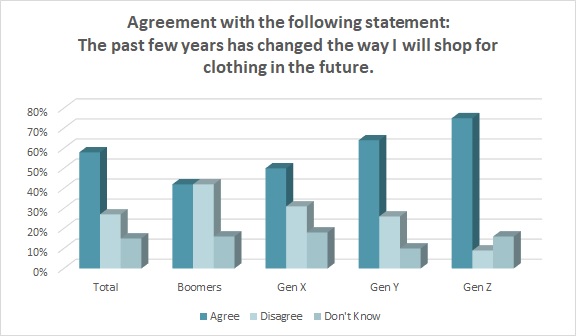The Council of Fashion Designers of America (CFDA) recently announced it will be celebrating its upcoming 60th anniversary by “looking to the future” with a metaverse, Web3, and NFT exhibition in December. While the subjects of the event may be unfamiliar to many, organizers hope to use it to show fashion players the opportunities that are becoming available in the digital world.
Our vision at 5Crypto and with this partnership is to empower and educate Web2 brands on the limitless opportunities Web3 presents, and create special moments that bridge the gap between consumer and crypto,” said Akbar Hamid, founder and CEO of 5th Column and 5Crypto, a communications agency for cryptocurrency, metaverse, NFTs, and consumer brands. More on Web2 versus Web3 in a bit.”
Steven Kolb
CEO, CFDA
The CFDA event will include a metaverse exhibition (metaverse can mean augmented or virtual reality, or avatar/gaming reality, among other things) of 60 looks from the CFDA’s six decades, as well as exclusive NFTs (non-fungible tokens) that will go up for auction.
Valentino Vettori, founder, Arcadia Earth, a platform that aims to raise awareness about sustainability and circular design, says fashion companies can start creating values and relationships with their clients through Web3, NFTs and crypto currency. During a presentation at the recent Coterie New York show, Vettori described Web2 as a website where the brand sells to others. He then explained Web3 almost like crowdsourcing – where a brand would be owned by whoever buys a piece of the company through non-fungible tokens or crypto. It could be owned by a 100 people or a million people, depending on the value someone creates for their company. The ownership is then distributed through digital assets like NFTs, whose ownership can be tracked through blockchained smart contracts.
“NFTs can remain a simple loyalty program where if you own my NFT, you can participate in my fashion show, or if you own my crypto currency, you may own part of my brand,” Vettori explained. “Let’s say I released shoes and I put beautiful pictures on the digital contract that says if you own the shoes in the physical space, you also own them in the digital space. Once you own the shoes, you also get to resell them. If it was a limited collection, that has value and now you can make money from it. Also, if you’re someone with no money but you have a lot of friends and you want to start a fashion business, you can create a brand and break it into tiny little pieces. And then you create a crypto (Vettori says it’s not hard to do), and you’re technically fundraising really fast. Before you know it, you have raised funds with your investors who are also your consumer and your community — and all the transactions are tracked through their blockchain with this smart contract.”
This might sound head-spinning. But it also sounds like it could be profitable for both retailers and brands, especially if executed by well-known names that already offer consumers a certain level of comfort. Currently, shoppers purchase most of their clothes at mass merchants like Walmart and Target (22 percent), according to Cotton Incorporated’s 2022 Lifestyle Monitor™ Survey. That’s followed by Amazon (13 percent), chain stores like Kohl’s (12 percent), department stores such as Macy’s and Dillard’s (11 percent), off-price stores like Ross and TJ Maxx (10 percent), specialty stores such as Gap and American Eagle (9 percent), and fast-fashion specialty stores like Zara and Uniqlo (6.6 percent).
Currently, most consumers prefer to purchase their clothes in a physical store (58 percent) versus online (42 percent), according to the Monitor™ research. It’s still quite traditional. But GWI, a U.K.-based market research firm, says more than one-fifth of Gen Z and Millennial shoppers want retailers to offer AR (augmented reality) so they can digitally try on products. The company says there has been a 29 percent increase in the number of VR (virtual reality) headset owners since 2020.

GWI also says brands are in a position to help consumers understand and navigate the digital fashion world. The firm says “confusion currently reigns” when it comes to NFTs and Web3, which gives brands the opportunity to be interpreters of this shopping arena. This makes even more sense when one considers that online shoppers turn to retailer and brand websites the most (35 percent) when they’re looking for ideas for online apparel purchases, according to the Monitor™ research. That’s followed by social media sites (30 percent), ecommerce-only sites such as Amazon and Net-A-Porter (28 percent), ecommerce-only apps (27 percent), emails from retailers and brands (24 percent), retailer and brand apps (22 percent), fashion or fashion trend sites (20 percent), and emails from ecommerce-only sites.
GWI adds that brands should also get into the gaming world, as it predicts gamers will be among the metaverse’s first adopters. To wit, GWI relates, 22 percent of consumers interested in taking part in the metaverse already play Minecraft.
While some of fashion’s digital future might sound too futuristic, retailers and brands should note that most consumers (58 percent) say the past few years have changed the way they will shop for apparel in the years to come, according to the Monitor™ research. Nearly half of these shoppers (47 percent) say they will shop for more apparel online. And 41 percent say they will be more purposeful with the clothes they do buy.
For its part, the CFDA is using its 60th anniversary to help the industry move forward.
“The CFDA has always pioneered creative and innovative thinking,” said the CFDA’s Steven Kolb, CEO. “And with our first metaverse exhibition and NFTs, we are embracing this new era of digital transformation.”
